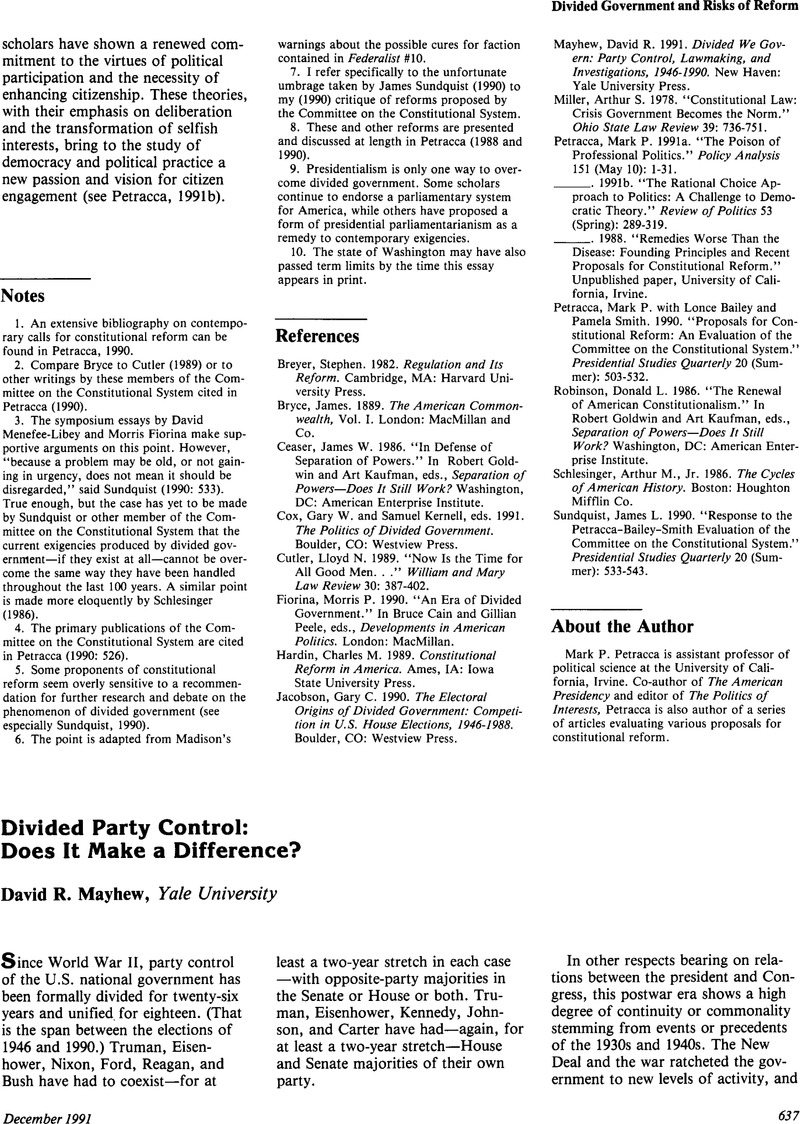Crossref Citations
This article has been cited by the following publications. This list is generated based on data provided by Crossref.
Epstein, David
and
O'Halloran, Sharyn
1996.
Divided Government and the Design of Administrative Procedures: A Formal Model and Empirical Test.
The Journal of Politics,
Vol. 58,
Issue. 2,
p.
373.
Schneiderman, Stuart B.
1998.
AN EXAMINATION OF THE EFFECT OF DIVIDED STATE GOVERNMENT ON TAX INNOVATION: 1960–1990.
Southeastern Political Review,
Vol. 26,
Issue. 1,
p.
249.
Bowling, Cynthia J.
and
Ferguson, Margaret R.
2001.
Divided Government, Interest Representation, and Policy Differences: Competing Explanations of Gridlock in the Fifty States.
The Journal of Politics,
Vol. 63,
Issue. 1,
p.
182.
Posselt, Julie Renee
2009.
Higher Education: Handbook of Theory and Research.
Vol. 24,
Issue. ,
p.
183.





